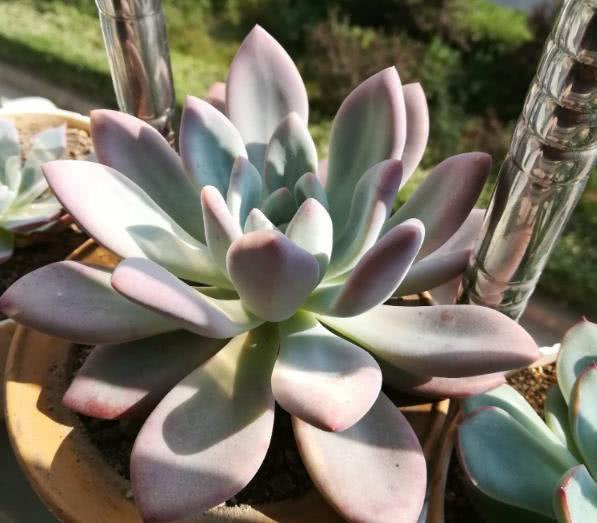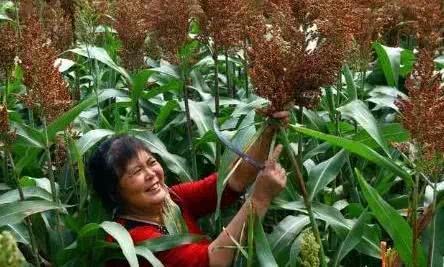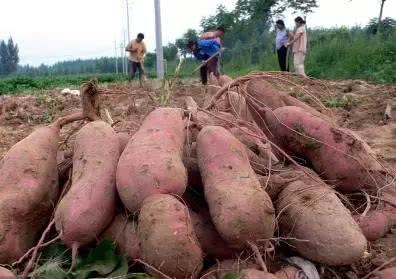Most succulent plants can teach you how to put succulent plants all over the balcony.

Most of the fleshy leaves can be inserted, some varieties of fleshy, can be propagated through cuttage, beheading, sub-plant, fleshy leaves need to meet three main conditions: temperature, humidity and light. Fleshy leaf cuttings were a method of fleshy reproduction with a high survival rate. They were simple and effective. Moreover, they could produce multiple fleshy leaves. During the growth period, they could also sprout roots smoothly. Moreover, leaf cuttings and budding fleshy seedlings had no requirements for flower pots. The leaves that were casually thrown into the flower pots might give you a surprise and grow small fleshy leaves!
In fact, leaf insertion only needs to grow at the point where leaf insertion can be carried out. If there is trauma on the leaf but the growth point is still there, we can modify some disinfectant at the wound to reduce the possibility of fleshy plants turning into water as much as possible. In summer, the possibility of leaves turning into water is relatively large. After modifying the wound, it can be inserted after drying the wound in a cool place.
Fleshy leaf cuttings can be said to be the simplest and most convenient method of reproduction. The steps for inserting fleshy leaves are also very simple. First, prepare the soil. In winter, the temperature is low. Mix some plant ash into the soil, which can keep warm and increase the fertility of the soil. Then select healthy leaves and dry them in a dry place for about two days to dry their wounds. After that, the leaves could be laid flat on the soil. The next thing to do was to wait patiently for the flesh to take root and sprout, and then change the pots.
If you want the leaves to sprout smoothly, you must ensure that the environment has a certain amount of light. The leaves cannot have direct sunlight, but lack of light will have a certain impact on the leaves. Therefore, you can put them in a bright place with scattered light indoors. If you don't sprout for a long time, we can repeatedly pull out the roots that grow out, or use needles to pin the growth points of the mother leaves. There is a certain positive effect. As long as the mother leaves do not melt and dry, there is hope for germination.
The temperature has a certain leaf insert, so in winter there is heating, open air conditioning flower friends can rest assured leaf insert, we can also create a small greenhouse environment for leaf insert, stuffy leaf insert can maintain the humidity and temperature of the environment, but must maintain ventilation, and watering should also be appropriate. Humidity is the key to making fleshy roots. If the air humidity is high, fleshy leaves can sprout when drying wounds. If the air is not humid enough, then when mixing soil, use river sand and vermiculite to keep water well, which is conducive to maintaining moist soil. During the process of inserting fleshy leaves, you can avoid spraying water on the surface of the soil to maintain humidity.
Fleshy leaf growth point position red, is a sign of budding, if fleshy has not budded, you can stimulate the growth point of the leaf, with needles or leaves inserted out of the root. There are many ways to play with multi-fleshy leaf inserts. What kind of flat and oblique inserts, or insert them in beverage bottles. When the temperature and humidity are not enough, you can try to use beverage bottles. Generally speaking, when the weather conditions are very good, it is good to have multi-fleshy leaf inserts.
This is a gathering place for succulent plant lovers to share succulent conservation skills. Welcome to pay attention to communication.
- Prev

Sorghum, which used to be one of the grains, is now rarely planted. Does it taste bad?
Sorghum belongs to the chestnut in the grain "millet, bean, hemp, wheat and rice". It has been the main food crop in China for a long time, but with the continuous development of science and technology, the breeding of high-yield varieties of wheat, corn and rice, and chemical fertilizer industry.
- Next

Experienced farmers who grow sweet potatoes should spread gray sweet potatoes to grow not only big but also good taste.
Friends with experience in agricultural production should know that the ash left from the fire in rural areas, commonly known as plant ash, can greatly increase the yield of sweet potatoes. Although this is the classics summed up by farmers in agricultural production.
Related
- Wuhan Hospital Iron Tree Blooming Result Was Instantly Frightened by the Gardener Master
- Which variety of camellia is the most fragrant and best? Which one do you like best?
- What is the small blue coat, the breeding methods and matters needing attention of the succulent plant
- Dormancy time and maintenance management of succulent plants during dormancy
- Minas succulent how to raise, Minas succulent plant pictures
- What are the varieties of winter succulent plants
- How to raise succulent plants in twelve rolls? let's take a look at some experience of breeding twelve rolls.
- Attention should be paid to water control for succulent plants during dormant period (winter and summer)
- Watering experience of twelve rolls of succulent plants
- Techniques for fertilizing succulent plants. An article will let you know how to fertilize succulent plants.

